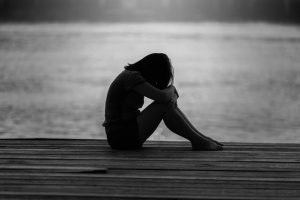Introduction
For any system specialized in treating health, it is essential to have a proper idea about what disease and health are. In this article, we would like to explain this concept from the perspective of classical homeopathy. A healthy organism can efficiently and proportionally respond to changes and threats from the environment in order to try to maintain homeostasis and continue existence. When there is disease, you see that these attempts to regain the optimal state and to solve problems are not efficient and proportional. According to Hahnemann, the founder of homeopathy, the life force regulates and coordinates the several systems that take care of this. During the course at the Educational Center for Classical Homeopathy, we teach you extensively and practically to gain insight into these ideas.
What is health according to classical homeopathy?
 Classical homeopathy is a way to help people improve their overall health. To know precisely what that means, it is obviously important to know what health is according to classical homeopathy. And also what the opposite of health is: disease. Later in this article, we will discuss what disease is.
Classical homeopathy is a way to help people improve their overall health. To know precisely what that means, it is obviously important to know what health is according to classical homeopathy. And also what the opposite of health is: disease. Later in this article, we will discuss what disease is.
A living organism strives for a certain balance. Every organism prospers within specific parameters. This balance is also necessary to guarantee existence. Think, for example, about temperature, amount of energy, and state of mind. A hallmark of a living organism is that it actively tries to maintain and keep a particular state. This ideal state or balance is also called homeostasis or equilibrium. For a more in-depth article about this principle, see Homeostasis: The Underappreciated and Far Too Often Ignored Central Organizing Principle of Physiology.
The characteristics of a healthy organism are that it can regain homeostasis relatively fast and efficiently. In general, you often do not even notice that the body is putting effort into finding this balance unless the circumstances are excessive. This adjusting or maintaining homeostasis also happens when the organism is threatened somehow. Think of micro-organisms, violence in the form of wounds or fractures, dealing with setbacks, and so forth.
The founder of homeopathy, Samuel Hahnemann (1755-1843), assumed that a kind of life force regulates and maintains the body. He called this life force ‘dynamis.’ A healthy dynamis ensures the organism recovers from all types of harmful or disrupting external influences. This life force pertains to the whole organism.
Examples of healthy responses
Suppose a person goes from a warm room to a cold one. This person will cool down, and subsequently, the body will try various ways to increase the body temperature. That is possible by trembling, causing the muscles to raise the heat. Also, the blood vessels in the skin will constrict so that warmth is not easily released into the environment. Besides that, the person will also think of ways to get warmer, like putting on warm clothes. In the article What is thermoregulation, and how does it work? you can read more about this topic.
Another example is the response that occurs after a significant loss, like the death of a loved one or the loss of something else you are firmly attached to (e.g., a job, money). That can lead to strong emotions like grief and mourning. Those emotions can be annoying and experienced as negative. Still, eventually, they will help deal with the loss and accept the situation that led to the grief and mourning. You can read these articles for more information about grief: What Is Normal Grieving, and What Are the Stages of Grief? and How to Cope With Loss: Tips for Healthy Grieving. Also, you can watch the video to the right.
The third example is about memory. Remembering what you just did makes it possible to execute tasks efficiently. That can help when you must do things. When preparing food, thanks to short-term memory, you can remember the previous steps you took to work efficiently. If you forget everything immediately, you cannot function properly, and it is impossible to finish tasks and even exist.
These are three examples of the physical, emotional, and mental planes.
Characteristics of a healthy way of achieving homeostasis
What are the actual characteristics of a healthy response to changes or threats from the environment? You could summarize them as follows:
- The response is proportional
- The response is effective
A proportional response means that the attempts and actions taken by the organism to regain the optimal state are in accordance with these circumstances. When it is a little bit colder, the body trembles a little, and you decide to put on a sweater that increases body temperature somewhat. On the other hand, when there is a severe loss, the grief and other emotions are strong and intense.
An effective response means how the organism tries to regain an optimal state as effectively as possible. That is relative to the circumstances. When you are too hot and need to cool down, perspiring is the most effective way of dispersing too much body heat.
What is disease according to classical homeopathy?
 When we know what health is, it is relatively easy to determine what disease is within classical homeopathy. Unhealthy or sick means that the living organism cannot respond proportional or effective to environmental changes and threats.
When we know what health is, it is relatively easy to determine what disease is within classical homeopathy. Unhealthy or sick means that the living organism cannot respond proportional or effective to environmental changes and threats.
Examples of unhealthy responses
We will use the examples already described in this article.
When there is a lot of perspiration, but the environmental temperature is actually not too high, this means the reasons are out of proportion. The body wants to cool down, but that is actually not necessary. That takes up unnecessary energy.
Or somebody suffers intensely from grief many years after losing his/her cat or guinea pig. That response is not proportionately to the suffering and distress you might expect in this situation.
An example on the mental plane is when the short-term memory does not work correctly, so you (partially) forget what you did. That results in spending more time and energy because you are not effective in the things you should do.
These responses are not proportional or effective in regaining homeostasis on the physical, emotional, or mental plane.
Health versus sickness
So, actually, disease or illness is the opposite of health. You can consider health and disease as two opposites on a scale. Every human being (living organism) is located somewhere between these extremes on this scale. Seldom is a person 100% healthy, but fortunately, it is also seldom that a person is 100% sick. The disruptions to achieve homeostasis on the mental, emotional or physical plane express themselves as symptoms.

In this article, we described only three examples, but of course, there are many more. Think, for instance, about sneezing to clear the nose from dust, diarrhea to expel unwanted substances from the intestines, coughing to clear the airways, or pain to spare a specific part.
The principles described in this article apply not only to humans but to all living organisms, for example, animals. That is why homeopathy can also be applied very well to animals.
Sick patient versus sick organs
The way we look at health from a classical homeopathic perspective also consists of the idea that we do not believe a single organ or tissue is diseased. There is something ‘intangible’ that is more central and is malfunctioning. Based on his experience, Samuel Hahnemann concluded that disease is not just a matter of a diseased or poorly functioning organ. That goes against the trend that was instigated some decennia before Hahnemann by Giovanni Morgagni (1682-1771). Morgagni introduced the concept that disease is located in organs or tissues. Even later, after the death of Hahnemann, Rudolf Virchow (1821-1902) went one step further by introducing the concept that the root cause of the disease is not located in organs or tissues but a level deeper: in the cells.
You could say that Hahnemann considered the concept as intangible because, with the level of technology, it was not measurable or visible. Hahnemann used his observations of patients to determine his ideas, not technology. He noticed that not only the main complaint but also other complaints decreased after prescribing the correct homeopathic remedy. Hahnemann did not deny the functional and structural changes in organs and tissues. Still, he considered them part of something larger that malfunctioned, namely the patient as a whole being sick.
That is still something that amazes many patients. The patient comes for treatment of one or more specific complaints. After taking the correct remedy, not only do the main complaints alleviate but also the general state improves. You can think of having more energy, developing an overall better mood, improved dealing with adverse circumstances, and so forth. But also other more minor complaints go away with this one correct remedy.
Why is this important for a course in classical homeopathy?
When you have read and understood the information above, then you probably realize that this concept is easy to understand but difficult to apply practically. For example, when is a response proportional to a particular influence from the environment? And most patients are not dealing with one symptom or health issue. Still, the sickness expresses via several symptoms and a range of health issues. How do you take all of this into account and maintain an overview?
We teach you that by studying many cases with practical examples. During our course, you will work out and analyze 40 big paper cases, various video cases, and more than 500 minor cases. In this way, we prepare you very well for clinical practice, and you can easily apply these concepts when treating patients.
Disclaimer: many homeopathic courses have different ideas about homeopathy. This article is, however, written from a classical homeopathic perspective. Another school might utilize other ideas (although they also call themselves classical homeopathy).
Sources:
- Hahnemann, S. (2004). Organon of Medicine (W. Boericke, Trans.; 6th ed.). B. Jain Publishers (P.) Ltd.







